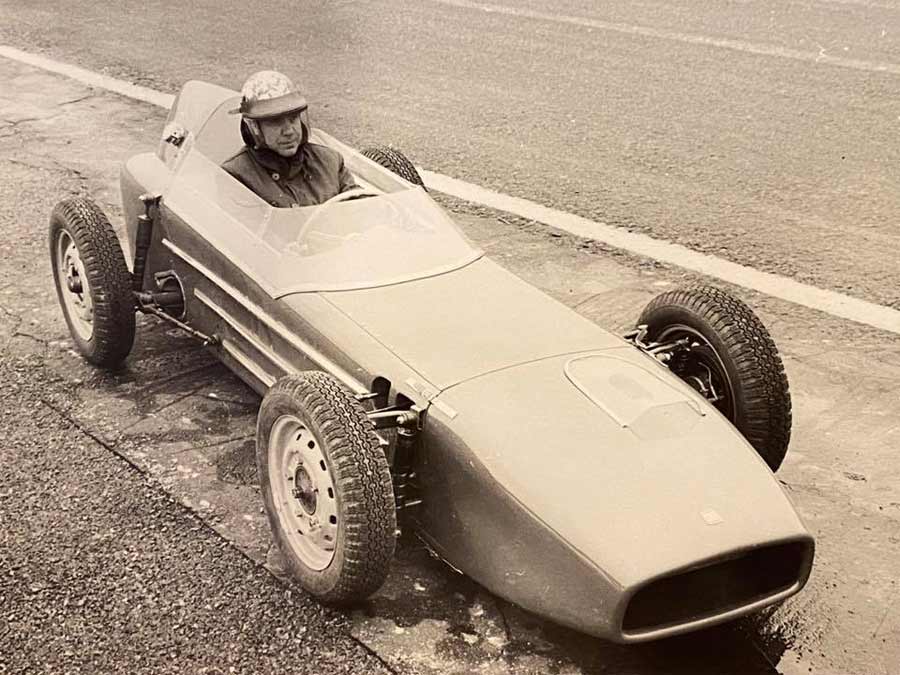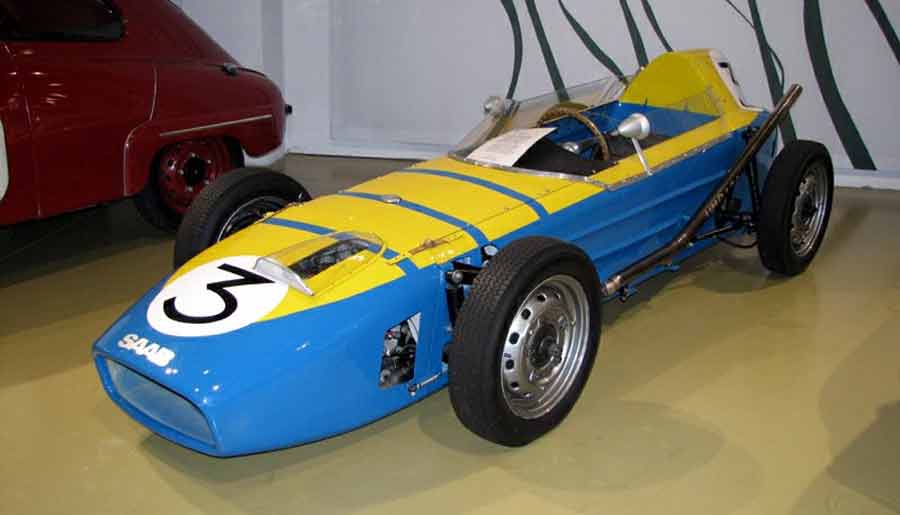The title may deceive you, it is not about the new Saab experimental car, but about a lesser known part of the history of Saab cars. This is actually the title of Saab’s October 1960 press release, exactly 60 years ago, when Saab decided to build a Formula Junior car based on a production model, all for the purpose of gaining experience in sports driving and car behavior in extreme conditions.
In the autumn of 1960 SAAB presented a Formula Junior car of their own design for the further development of Saab cars. And as we could see in the future, many experiences gathered from the development of this experimental car contributed to the development of the then new models. The car was designed by Rolf Mellde, who was one of the original pioneer designers of the SAAB motorcar.
According to project participants, That Saab powered formula car reportedly did not handle well. Whatever, now all of these formula cars are at Swedish Saab Car Museum, and according to one of Erik Carlsson‘s interlocutors, Saab Formula Juniors were very fast really fast but difficult to drive. But, for first attempt of building a Formula car they where great.
You can read more about the competitions in which this experimental car participated here, and below you can read the read document – the press edition of Saab from October 1960.

Saab Formula Junior Racer
October 1960
Saab are currently testing a new experimental car, a front-drive Formula Junior racing car with an 850 cc engine and an all-up weight of about 380 kg .
In accordance with the international rules for the class, the Saab “F. J .” is an open single – seater with all principal chassis elements coming from a single production type car model. In view of the light weight and special nature of the car, some departures from standard are naturally required in the suspension, the petrol tank and some of the oontrols, but apart from this the chassis consists solely of standard Saab components, such as the engine (where tuning is permissible), transmission, rear axle, brakes and fuel system.
The body, on the other hand , is very much non-standard. One feature of special interest is that there is no separate load-bearing structure such as a tubular framework. The entire car is held together by a strong but light stressed skin structure made of sheet steel. This unit is fully two metres long yet weighs no more than 44 kg!
The engine is placed inside the low fibreglass shell that forms the nose of the car, and the petrol tank is hidden by the fibreglass tail section. The 3-cylirlder 841 cc Saab engine has been fitted with twin carburators and tuned to develop almost 70 b.h.p.
The front of the car has been kept very low by mounting the engine on its side. In order to achieve a low centre of gravety, the gearbox has been turned so that the gear-shift mechanism is at the bottom. Instead its normal position behind the engine and over the front axle, the radiator is located in the extreme front of the car. No fan is fitted but there is a coolant circulations pump. The 12 volt electrical system includes a self-starter.
The car now being tested is finished in bright red. A second, similar car will be completed in a week or two. No deoision has yet been taken as to whether further cars will be built.
Although it is only two years since the Formula Junior class came into being and opened up a new, interesting field to motor sport enthusiasts all over the world, widespread activity has already started in many oountries. The aim with Saab’s new experimental cars is primarily to gain experience. Some months must elapse before any decision can be made regarding participation in Formula Junior racing events.












Is this the only front-wheel-drive formula car ever built, or are there other examples?
The ancestor of the sweden Formula 4 promotion